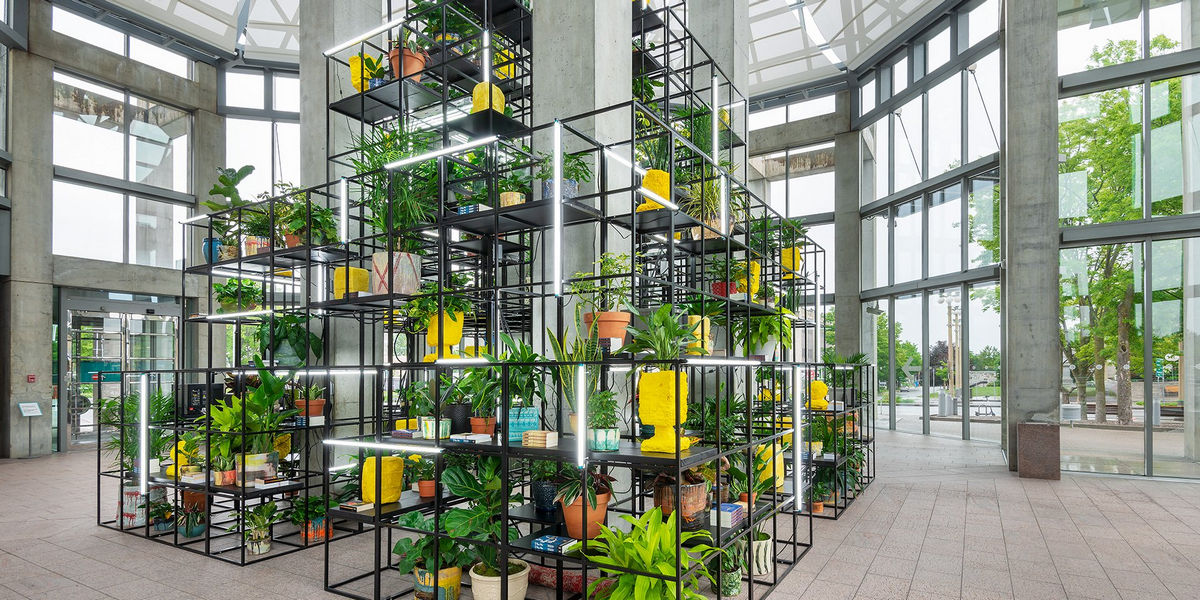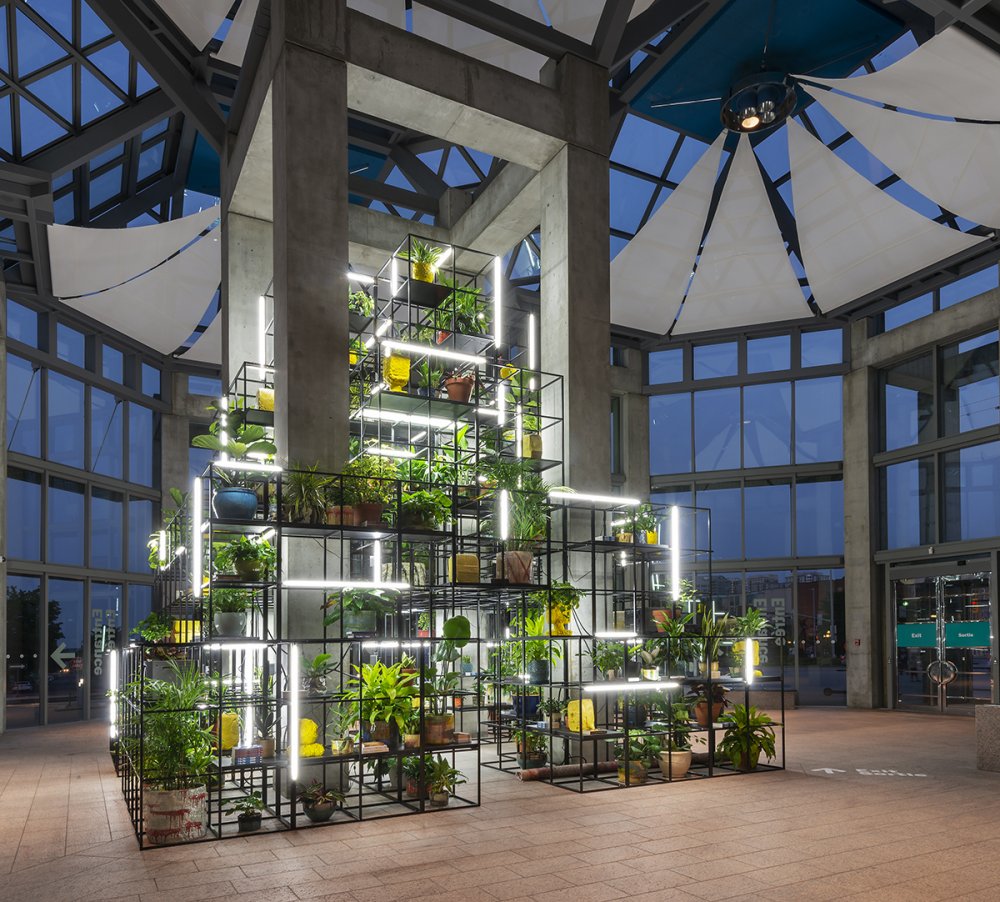PRESENTATION: Rashid Johnson-Capsule
 Rashid Johnson is recognized as a major voice of his generation. His work investigates themes of anxiety and escapism through poignant meditations on race and class. After studying photography at the School of the Art Institute of Chicago, Johnson’s practice quickly expanded to embrace a wide range of media – including sculpture, painting, drawing, filmmaking, performance and installation.
Rashid Johnson is recognized as a major voice of his generation. His work investigates themes of anxiety and escapism through poignant meditations on race and class. After studying photography at the School of the Art Institute of Chicago, Johnson’s practice quickly expanded to embrace a wide range of media – including sculpture, painting, drawing, filmmaking, performance and installation.
By Efi Michalarou
Photo: NGC Archive
Much of the autobiographical quality of Rashid Johnson’s work stems from memories of images and products, as well as intellectual, musical and literary sources that surrounded him during his upbringing in the Chicago suburb of Evanston. In 2020, as part of its Contemporary Arts Project initiative, the National Gallery of Canada commissioned American artist Rashid Johnson to create a major work for the building’s glass-domed main entrance. The resulting work, “Capsule”, is the largest pyramidal steel sculpture Johnson has produced to date. The installation consists of a series of stacked cells filled with plants, books, fiberglass and shea-butter sculptures, video monitors and grow lights. It functions like a brain, incorporating and connecting autobiographical, intellectual, musical, art historical, and literary sources, which are embedded within the objects occupying the minimalist form. The majority of plants are housed in hand-built ceramic pots made and decorated by the artist with recurring imagery also found in his paintings. The installation features carved blocks of shea butter, one of the artist’s signature materials that was a fixture in his childhood home. The carefully selected stacked books explore tensions and experiences related to issues of race and class. Johnson has incorporated a pathway through the monumental installation, offering visitors unexpected vantage points. He has also included a performance space at its heart to accommodate live performances. It is his hope that the work will solicit experiences and responses that can be at once emotional, intellectual and critical.
Rashid Johnson was born in Chicago in 1977. He received a BFA in photography from Columbia College Chicago (2000) and an MFA from the School of the Art Institute of Chicago (2005), where he became interested in critical theory through the study of film, video, and new media under artist Gregg Bordowitz. Working across the disciplines of painting, sculpture, photography, and video, Johnson explores his personal past and identity within the larger context of African American intellectual and creative history. In 2001 Johnson presented a series of documentary photographs of Chicago’s African American homeless population in the Studio Museum in Harlem’s Freestyle exhibition, after which his practice broadened to encompass conceptual abstraction, mark making, and the constructed object. “Black Steel in the Hour of Chaos” (2008) is an enlarged sculpture of the crosshairs of a riflescope. The work draws its title from a 1988 song by hip-hop group Public Enemy, who use a rendering of crosshairs in their logo. Through form, scale, and reference, the work addresses issues concerning the privatized prison system and its dependence on the incarceration of black men. In his video “The New Black Yoga” (2011), Johnson interpreted his experience trying to learn yoga in Berlin while struggling with a language barrier. The work incorporates humor through the haphazard, dance-like movements of five men on a beach, and symbolism in the crosshairs image that appears frequently within his oeuvre. Johnson is perhaps best known for his shelf-like constructions, which were inspired by Conceptual artist Lawrence Weiner’s description of a table as “something to put something on” in his 2007 book of the same title. Johnson has translated this idea into wall pieces that support items from the artist’s life, including books by sociologist and civil rights activist W. E. B. Du Bois and astrophysicist Neil deGrasse Tyson, Parliament and Al Green record covers, African shea butter, CB radios, and houseplants. These works use appropriated objects to emphasize the embedded narratives that transform a physical object into a visual symbol. Johnson’s work articulates the challenge of distinguishing an independent personal history amid the strength of a collective social history such as that of African Americans. In 2012 Johnson received the High Museum of Art’s David C. Driskell Prize, which honors contributions in the field of African American art. The same year, he was short-listed for the Hugo Boss Prize by the Guggenheim Museum.
Photo: Rashid Johnson, Capsule, 2020, powder coated steel, plants, ceramics, books, video, monitors, grow lights, 23 x 23 x 23 ft, Purchased 2022, Accession number 50257, National Gallery of Canada, Ottawa. © Rashid Johnson. Photo: NGC
Info: National Galley of Canada, 380 Sussex Drive, Ottawa, ON, Canada, Duration: Until 5/1/2023, Days & Hours: Tue-Wed & Fri-Sun 10:00-17:00, Thu 10:00-20:00, https://www.gallery.ca/


